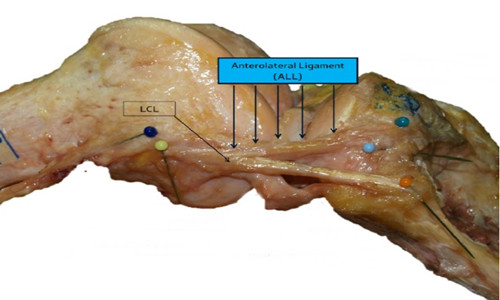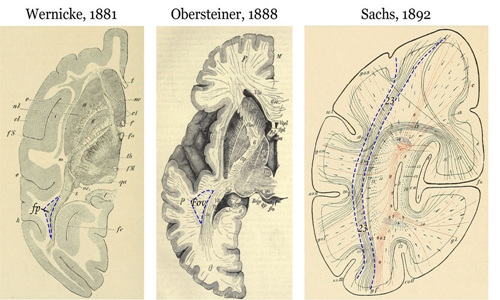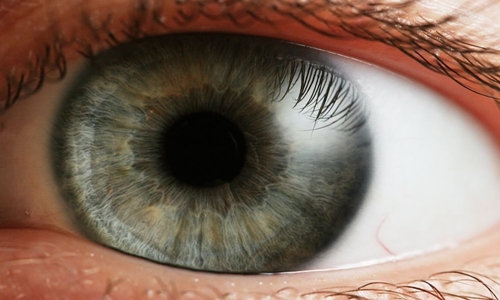5 parts of new scientific world discovered in human body
People are an apparatus made up of many parts. In addition to the parts that most of us know, there are many other parts of the body that have been forgotten such as hanging walls, occipital occlusion in the brain .
- 5 parts of the human body become redundant and useless due to evolution
- If stretched all the way, how big are the human organs?
In recent times, scientists have discovered 5 new parts of the human body, bringing the total number of parts to 79. Learn about these 5 parts to see if they have an important role to play. please
1. The hang hanging

Mesentery or mesenteric membrane is part of the peritoneum - the lining of the abdominal cavity, attaching the intestine to the abdominal wall. In the past, the scientific community considered it only a loose structure of the digestive system, an unimportant part. But the research of scientists from Limerick University, Ireland shows that the mesenteric is an integral part, performing many important functions (still being studied and determined) and worthy of being a new part. in the body.
The study was published in the journal Lancet Gastroenterology & Hepatology in November 2016.
2. The 5th ligament of the knee
Since 1879, French surgeon Paul Segond has discovered a strip of flexible ligament, connecting the knee bone, but the structure and function of this ligament strip remains a mystery to science.

The image of the anterior ligament (ALL) in the front of the knee.(Photo: University Hospital Leuven, Belgium.)
It was not until the end of 2013 that the expert group of Leuven University Hospital, Belgium, discovered this band of ligaments. And because it is in front of the knee, it is named after the anterior ligament (ALL) or the fifth ligament of the knee.
Unlike the other 4 ligaments, the 5th ligament of the knee is a special part that assumes the role of connecting the femur and tibia, stabilizing the bone joint, helping people to rotate their legs and change direction easily.
3. Bundle of occipital standing in the brain
In 2012, a team of experts at Washington University, USA discovered a bundle of nerve fibers in the brain involved in human reading. This part is not described in modern medical literature but is mentioned in the brain map of Carl Wernicke, the German neuroscientist composed at the end of the 19th century, called the occipital cluster in the brain, ( Vertical Occipital Fasciculus), VOF for short.

The image shows the position of the occipital bundle standing in the human brain.(Photo: Jason Yeatman.)
VOF is responsible for connecting brain areas, helping the brain read, move eyes, identify the face of the opposite person, function and focus on looking at specific objects in space.
4. Dua layer behind cornea
In 2013, Harminder Dua, professor of ophthalmology at Nottingham University, UK discovered a thin but tough membrane in the back of the cornea. It is only about 15 microns thick (or 15 millionths of a meter). Although it is very small but plays a very important role, participating in groups of diseases affecting the health of the cornea.

The newly discovered Dua layer is located behind the cornea of the eye.(Photo: Wikimedia.)
This membrane is later named the Dua layer behind the eye cornea (Duas layer (eye), named after the person who discovered it.
Before the Dua class was discovered, the scientific community pointed to 5 layers of eyes. The discovery of new membranes makes eye surgeries simpler, safer, especially vulnerable in the Dua class.
5. Brain lymphatic vessels
For centuries, scientists believe that the brain is the only organ lacking connection to the lymphatic vessels. But in 2015, scientists found tiny lymphatic vessels in the meninges, which are very small and obscured by large blood vessels.

The lymphatic system in the human brain.(Photo: University of Virginia.)
This lymphatic vessel transports immune cells throughout the body to fight infection and eliminate waste.
You should read it
- If stretched all the way, how big are the human organs?
- The human body changes throughout life but only one part does not change, you know what it is?
- In the future, these excess body parts may completely disappear due to evolution
- 5 parts of the human body become redundant and useless due to evolution
- 8 small parts on the body that we usually don't care about
- The human body and huge numbers startle you
- 10 facts that amaze you about your human body
- The human body is stronger than the supercomputer?
- 18 interesting facts about the human body that make you say 'miraculous'
- What to eat good for knee joints? 9 foods that are good for the knee should be supplemented
- 9 parts of your body make women more drunk
- 7 evidence that the human body is still evolving day by day
May be interested

10 great astronomers have made the most important contribution to the astrophysical field of humanity

Discover the 9 most famous legendary swords in world history

Science proves to want to burn fast calories watch horror movies

Children eat snacks related to father's income and education?

Artificial sweeteners can be counterproductive for dieting

New scanning technology brings 3D images of live insects






 The human body changes throughout life but only one part does not change, you know what it is?
The human body changes throughout life but only one part does not change, you know what it is? If stretched all the way, how big are the human organs?
If stretched all the way, how big are the human organs? In the future, these excess body parts may completely disappear due to evolution
In the future, these excess body parts may completely disappear due to evolution 5 parts of the human body become redundant and useless due to evolution
5 parts of the human body become redundant and useless due to evolution 8 small parts on the body that we usually don't care about
8 small parts on the body that we usually don't care about 18 interesting facts about the human body that make you say 'miraculous'
18 interesting facts about the human body that make you say 'miraculous'